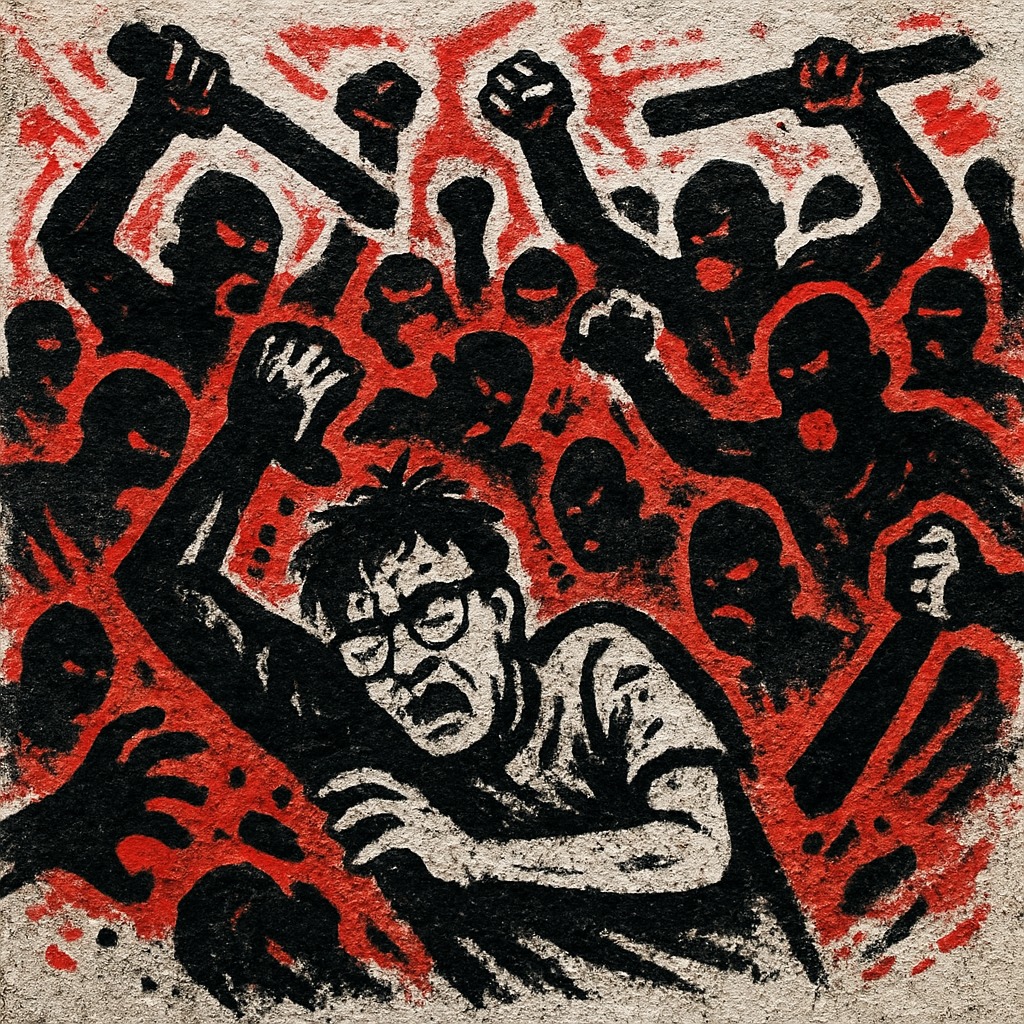When protesters stormed the gates of Gonobhaban on 5 August 2024, it was more than a political climax—it was the theatrical unseating of a regime. The looting that followed wasn’t mere chaos but a complex ritual of symbolic conquest, emotional release, and, ultimately, a dangerous precedent. What began as revolutionary performance soon spiralled into a far-reaching contagion: the normalisation of mob violence.
Inside the prime minister’s residence, the acts were unmistakably performative. Protesters posed on Sheikh Hasina’s bed, paraded her sarees and luxury belongings, and consumed food from her kitchen. These weren’t the gestures of ordinary thieves, but of victors enacting a political exorcism. The residence—once the untouchable heart of state power—was desacralised before the nation’s eyes. The state’s mystique was stripped down to spectacle.
But the symbolism quickly mutated. Alongside this theatrical humiliation came utilitarian plunder—televisions, computers, furniture, even livestock. People seized what they believed had long been hoarded by a corrupt elite. Some stole out of rage, others out of need, many out of opportunism. The crowd was not monolithic; it was a convergence of motives—political, personal, and primal.
A separate group confiscated weapons from the parliament building—an act that hinted at strategic foresight. Yet even this had two faces. Student leaders later returned the arms to preserve the movement’s legitimacy, showing how rational restraint and chaotic excess coexisted within the same revolution.
What Gonobhaban’s breach truly triggered was a collapse of moral boundaries. Once the seat of power fell, all associated symbols became targets. Statues of Sheikh Mujibur Rahman were toppled, party offices torched, museums ransacked. The logic was clear: if the centre crumbled, so too must its extensions. Political iconoclasm spread across the country in waves of fire and fury.
But the most dangerous transformation came next. The logic of revolution slid into the realm of vengeance. In a vacuum of state authority and public trust, mob violence metastasised. Vigilantism became the default response not only to political grievances, but to crime, morality, and even personal conflict. This wasn’t revolutionary justice—it was revenge cloaked in the rhetoric of liberation.
When people are ignored for too long, their pain festers. When the state meets protest with bullets—as it did in July—that pain turns violent. But we must ask: what happens when victims of state violence become perpetrators of unaccountable violence?
Revolutions, as history shows, can lose their soul in triumph. The French Revolution had its guillotine. The Arab Spring, its civil wars. Bangladesh now faces its own reckoning. If we fail to distinguish between righteous resistance and mob rule, we risk replacing one tyranny with another—this time, faceless and diffuse.
The looting of Gonobhaban wasn’t a footnote; it was the inflection point. It revealed not just the people’s anger, but the void left by a collapsed rule of law. If this revolution is to have meaning, it must draw a line—between justice and excess, dignity and destruction.
Justice cannot be built on stolen goods and burned homes. It must stand on principle, restraint, and memory. Otherwise, the fruit of our revolution will rot before it ripens.


